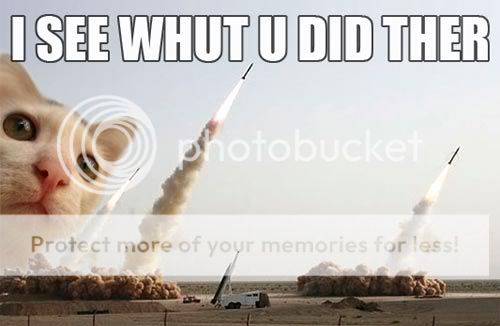Si modo
Diamond Member
S. Aftergood, FAS (no link, email)A.Q. KHAN DISCUSSES PAKISTAN'S NUCLEAR PROGRAM
Pakistan was ready to test a nuclear weapon just six years after it first began to enrich uranium, according to A.Q. Khan, the architect of the Pakistani nuclear program and an infamous proliferator of nuclear weapons designs and technology.
"It was 6 April 1978 when we achieved our first centrifugal enrichment of uranium," Khan recalled in a chatty, wide-ranging interview with Pakistani television (pdf) last week. "We had achieved 90 percent [enrichment] by early 1983."
"I wrote a letter to General Zia on 10 December 1984, telling him that the weapon was ready and that we could detonate it on a notice of one week," Khan said.
In addition to a timeline for the Pakistani nuclear weapons program, the Khan interview discusses the costs and logistics involved, and his successful efforts to evade export controls. "They could not outmaneuver us, as we remained a step ahead always," he said.
The interview also provides "interesting information about Pakistan's supply chains, which he says were the same for Iran and Libya as well," said Ivanka Barzashka, an FAS researcher who is studying the proliferation of centrifuge technology.
The interview with A.Q. Khan, who was recently released from house arrest, was broadcast in Karachi on August 31. It was helpfully translated from the Urdu by the DNI Open Source Center. The translated interview has not been publicly released, but a copy was obtained by Secrecy News. See "Dr Abdul Qadeer Khan Discusses Nuclear Program in TV Talk Show," Aaj News Television, August 31, 2009
Here is a link to the interview, though: Dr Abdul Qadeer Khan Discusses Nuclear Program in TV Talk Show
So, the public first became aware of uranium enrichment activities at Natanz in 2002. It's seven years later, and the Iranians aren't slackers.
Promoting and supporting nuclear arms non-proliferation are in the security interests of most of the world. An increase in the number of nuclear-armed nations increases the risk of those weapons actually being used and of nuclear weapons and material falling into the hands of extremists; and it increases other nations’ desire to develop nuclear weapons for deterrent. In a post Cold War world, new players in the nuclear arms race have emerged, notably North Korea and Iran. While there is no evidence that Iran has developed a weapon; there is significant evidence supporting a reasonable suspicion that Iran is moving toward becoming a nuclear-armed state. Preventing Iran’s progress in this area is a high priority in US foreign affairs.
As a non-nuclear weapons signatory to the Nuclear Non-Proliferation Treaty (NPT), Iran has the right to research, develop, and produce nuclear energy and technology for peaceful purposes. With this right comes the responsibility to disclose fully all activities involving nuclear material to the International Atomic Energy Agency (IAEA). Iran has built a uranium enrichment facility at Natanz and Iran claims that their enrichment activities are for nuclear energy and research, not for producing weapons-grade uranium. However, there are questions concerning Iran’s enrichment activities.
Uranium enrichment is a stagewise operation where the enrichment capacity and capability of the facility determine how many stages (centrifuges) the facility will require. There is no significant civilian need for highly enriched uranium (HEU, >20% U-235), thus one would assume that any nation interested in peaceful uses of nuclear material would be interested in producing only low-enriched uranium (LEU, 20%>%U-235>0.7%). As there currently is no shortage of LEU in the world market, the feasibility of constructing new enrichment capacity seems economically unattractive. The number of centrifuges Iran has operating at Natanz is greater than 1,600 and Iran claims to have a total of 6,000 centrifuges. Natanz is capable of producing HEU; there is reasonable suspicion that this facility has been built to produce HEU. The fact that Iran has been less than transparent about their enrichment activities to the IAEA further supports this reasonable suspicion.
Although Iran denies any interest in developing nuclear weapons, its activities at Natanz and lack of transparency are inconsistent with its claims. To date, Iran has rejected international efforts to restrict their enrichment activities. The international community has imposed sanctions and offered incentives, yet Iran continues its enrichment activities. More specific incentives (US proposed Global Uranium Fuel Bank) combined with possible additional and harsher sanctions (those recently proposed by Congress) must be considered in future negotiations. The US has requested that Iran participate in negotiations by this autumn; the ultimate goal of these negotiations is to limit Iran’s enrichment activities. Their agreement to participate in these talks will be a positive change in Iran’s tactics. However, if Iran refuses to participate, most of the groundwork for harsher sanctions has been put into place by Congress last month. All nations must be creative and more specific in proposed incentives and sanctions than they have been in the past, since preventing Iran’s continued progress toward becoming a nuclear-armed state is a high security interest of the world.
Last edited:
